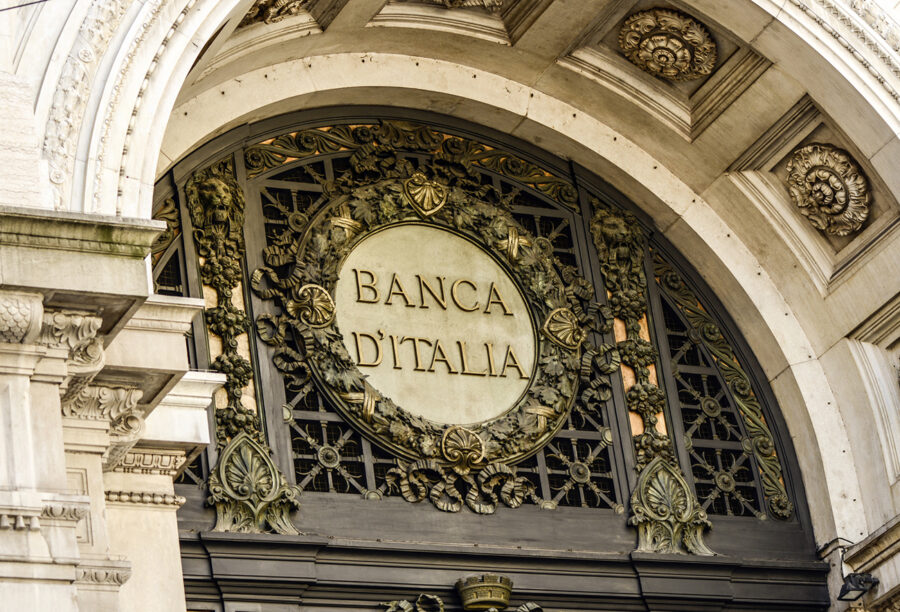Trade credit, which suppliers of goods and services provide their downstream producer-customers, is a double-edged sword, according to a new paper by experts at Wharton and Stanford. It is a credit multiplier that supplements bank lending and helps expand economic output. But trade credit can also make the economy more vulnerable to financial shocks; it could either dampen or amplify the effects of financial shocks on economic output, depending on the borrowing capacity of suppliers, the paper noted.
“The extent to which non-financial firms are lending and borrowing to each other is sizable,” said Wharton finance professor Gideon Bornstein, who co-authored the paper titled “The Macroeconomic Effects of Trade Credit” with Stanford University economics professor Luigi Bocola. “It also fluctuates over time, so it’s also quite volatile.”
As a credit multiplier, it reduces the economic distortions caused by financial frictions. But it also makes the economy potentially more exposed to financial market disruptions — credit supply shocks hurt both bank lending to firms and the ability of their suppliers to provide trade credit, the paper noted.
Trade Credit a Major Factor
According to the paper, most companies around the world address the bulk of their liquidity needs using trade credit. In its analysis of Eurostat data covering the 1995–2017 period, the paper found that trade credit as a share of short-term financing was 75% in Spain and 56% in Italy. Those shares were larger than short-term debt securities and short-term loans issued by banks combined. Other countries listed are Germany (49%), France (46%), the U.S. (44%), and the U.K. (21%). Bornstein attributed those relatively lower shares in the U.S. to its “more developed banking systems” that reduced the reliance on trade credit.
How Italy Gained and Hurt with Trade Credit
The authors used Italy as a case example and studied data on Italian firms between 2007 and 2015 to ascertain the effects of the 2008 Great Recession. They found that while trade credit enabled economic output in Italy to grow 14% on average, it amplified the impact of the 2008 financial crisis by reducing output by 11%, instead of a 6% fall that would have occurred without trade credit.
The authors developed a model with a framework to gauge the macroeconomic significance of the trade credit and the economy-wide effects of financial shocks. In their model, trade credit is short-term financing, and it is based on long-term contracts between firms linked in the production process.
Bonding that relationship is the reputation of a customer with its suppliers, which of course is damaged if the customer defaults. It is a credit multiplier in that suppliers can discount with banks the bills they raise on their downstream customers, and thus obtain liquidity.
“If we have an aggregate financial shock where the entire banking industry is cutting back on loans, many times suppliers will also find it hard to borrow from banks.”— Gideon Bornstein
The Two Sides of Trade Credit
In the first of two results, the model demonstrated that “trade credit reduces the economic distortions due to financial frictions and brings the economy closer to the first best.” (The “first best” is the state when credit markets are frictionless, the paper noted.) Here, it showed that output is constrained without trade credit because bank credit is used chiefly to pay production costs and suppliers. When bank credit runs scarce, overall output takes a direct hit. Trade credit helps smooth the financial cost of scarce bank credit, which the second result in the model showed.
In an economy with trade credit, suppliers are in part paid at the end of the production period, and that “alters the equilibrium outcome,” the paper stated. The authors outlined the two ways in which that occurs: “First, a larger share of bank credit is used toward the payment of production costs. Second, suppliers can discount their accounts receivable with banks if they need more liquidity. As a result, the total available quantity of bank credit increases.” The model estimated that an economy with trade credit has three times more bank credit than that without trade credit.
How Trade Credit Amplifies a Shock
But those bigger gains from trade credit have a flip side. When the economy is hit by a financial shock that triggers a drop in bank credit, it “tightens the suppliers’ borrowing constraint, increasing the costs of providing trade credit,” the paper pointed out. “The fall can then amplify the effects of the credit supply shock on output.” As a result, the overall output loss can be larger than that in an economy without trade credit.
“If we have an aggregate financial shock where the entire banking industry is cutting back on loans, many times suppliers will also find it hard to borrow from banks,” Bornstein said. “And that can lead to an amplification of the financial crisis.” The study of Italian firms buttressed that point: Without trade credit, the financial crisis in Italy in 2008 would have been about 45% less severe, he said.
Takeaways for Regulators
Most analyses of financial crises consider bank credit and its ability to handle shocks, but it is also important to look at credit supply by non-financial firms, or trade credit, Bornstein said. “Regulators must monitor these borrowing chains across firms and assess the borrowing capacity of suppliers. It can help understand the vulnerability of the system.” Tracking firm-level finances would give off red flags, he noted. “When a firm is doing badly and defaulting on its repayments, it will be important for regulators to monitor all of the network effects.”



